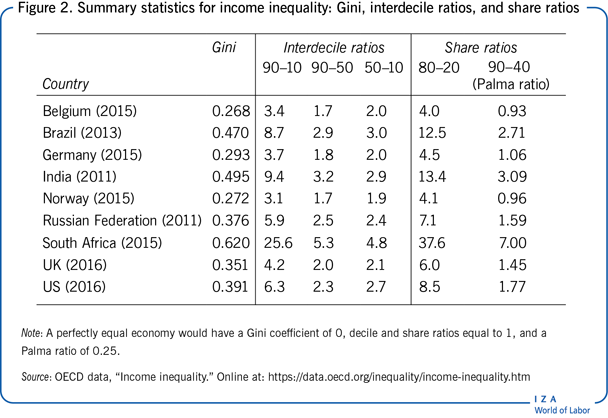Содержание
Lowering taxes makes households and businesses have more money to spend on goods and services. As the demand for goods and services increases, businesses are eager to raise their production. Strengthening demand encourages companies to recruit more workers and increase capital expenditure.
- Because we are dealing with a macroeconomy in monetary policy, the changes which the central banks make need time to filter down through the economy.
- Local dollars might be worth more when spent locally, but that doesn’t mean all spending happens at home.
- This is because the government have to borrow from the private sector who will then have lower funds for private investment.
Full BioMichael Boyle is an experienced financial professional with more than 10 years working with financial planning, derivatives, equities, fixed income, project management, and analytics. “Abolish the penny?” This is a question that has frolicked around the economic scene for decades. Advocates of abolishing the penny call upon claims supported by faulty evidence, for instance, “Two thirds of immediately drop out of circulation” . So why should we, as Americans, abolish something as symbolic to our national heritage as the penny, without proper reasoning? Furthermore, abolishing the penny would lead to detrimental implications such as job loss, a period of economic confusion, and unnecesary economic reform.
What are the 5 limits of fiscal policy?
It expands profitability since it targets expanding the money supply. Also, there is a high demand for goods and services, and organizations gear ready for rising production in terms of quality and quantity. Expansionary Fiscal Policy is one of the most effective tools used by the governments to promote monetary activities during the time of recession. Fiscal policy is a way by which the government attempts to control the economy. It is mainly based on notions from John Maynard Keynes, who opposed governments could solidify the business cycle and oversee financial outcomes.
The 2023-24 Budget: California’s Film Tax Credit – Legislative Analyst’s Office
The 2023-24 Budget: California’s Film Tax Credit.
Posted: Tue, 28 Feb 2023 18:04:35 GMT [source]
Having a small amount of it is actually healthy for a growing economy because it encourages investment activities. This event can also allow employees to expect higher wages for the work they provide. By raising the target interest rate under monetary policy, investment becomes more expensive.
Should the Government Be Getting Involved With the Economy?
In response to the crippling disadvantage of fiscal policy of the pandemic, European governments enhanced their public spending on medical resources, subsidies, employment generation, etc. Another measure was cutting down several tax rates and social security contributions. Keynesian TheoryKeynesian Economics is a theory that relates the total spending with inflation and output in an economy. It suggests that increasing government expenditure and reducing taxes will result in increased market demand and pull up the economy out of depression. Fiscal policy is a government-initiated measure to alter tax rates and government spending for creating a macro-level impact on the nation’s economy.
It takes some time for policy makers to realize that a recessionary or an inflationary gap exists—the recognition lag. Recognition lags stem largely from the difficulty of collecting economic data in a timely and accurate fashion. The current recession was not identified until October 2008, when the Business Cycle Dating Committee of the National Bureau of Economic Research announced that it had begun in December 2007. Then, more time elapses before a fiscal policy, such as a change in government purchases or a change in taxes, is agreed to and put into effect—the implementation lag. Finally, still more time goes by before the policy has its full effect on aggregate demand—the impact lag. The discretionary fiscal policy is crucial in influencing the aggregate demand within an economy.
Contractionary Fiscal Policy
During a recession, the government might employ expansionary fiscal coverage by reducing tax rates to extend mixture demand and gas financial development. The government uses both financial and fiscal coverage to satisfy the county’s economic goals. Salamia however, is dealing with recessionary pressures and contractionary fiscal policy will solely worsen her problems.
Fiscal policy uses government spending and tax policies to influence macroeconomic conditions, including aggregate demand, employment, and inflation. These monetary policy pros and cons serve as a guide which helps the central banks decide which tools can benefit the microeconomy. Their choices are based on whether there is growth or recession present. The goal is often to achieve slow, sustainable growth without overheating to prevent adverse actions. The impact of the monetary policy tools that are used by the central banks of a country have a nationwide impact.
It has many types, one of which includes the discretionary fiscal policy. During the Great Depression of the 1930s, U.S. unemployment rose to 25% and millions stood in bread lines for food. President Franklin D. Roosevelt decided to put an expansionary fiscal policy to work.

Some economists argue that these forces are so powerful that a change in fiscal policy will have no effect on aggregate demand. Because empirical studies have been inconclusive, the extent of crowding out remains a very controversial area of study. Note, however, that it is private investment that is crowded out. The expansionary fiscal policy could take the form of an increase in the investment component of government purchases. As we have learned, some government purchases are for goods, such as office supplies, and services. But the government can also purchase investment items, such as roads and schools.
List of the Cons of Monetary Policy
Where expansionary fiscal policy involves deficits, contractionary fiscal coverage is characterised by finances surpluses. This coverage is rarely used, however, as it’s vastly unpopular politically. This induces an inclination for continuous increases in public debt and the tax burden. In flip, this will likely have adverse results on the economic system’s lengthy-run progress prospects as high taxes reduce the incentives to work, invest and innovate.
Communities can quickly see the positive benefits of a good fiscal policy. Expansionary fiscal coverage is controversial, however, because it is likely to enhance the level of government debt. If the government plans to increase spending – this can take a long time to filter into the economy, and it may be too late.
Expansionary PolicyExpansionary policy is an economic policy in which the government increases the money supply in the economy using budgetary tools. It is done by increasing the government spending, cutting the tax rate to increase disposable income etc. In simple words, we can say that fiscal policy alludes to the use of government spending and tax policies to make an impact on financial situations. Expansionary fiscal policy is a form of fiscal policy that involves decreasing taxes, increasing government expenditures, or both, to fight recessionary pressures. Public policymakers thus face differing incentives relating to whether to engage in expansionary or contractionary fiscal policy.
Tax Incentives May Be Spent on Imports
The fiscal expansion then may overheat the economy and set the nation up for another market crash. Reduced government spending to decrease inflationary pressure could adversely affect public services such as public transport and education causing market failure and social inefficiency. When monetary policy is general in nature and impersonal in impact, the fiscal policy, in contrast, is selective. The latter, on the contrary, encroaches directly upon the market mechanism and gives rise to an allocation of resources which may be construed as good or bad depending upon one’s value judgements.

In economics, a recession is a decline in economic activity affecting Gross Domestic Product or GDP for at least two consecutive quarters causing negative economic growth . In order the help end the recession the United States government along with the Federal Reserve used Fiscal and Monetary to help prevent a worst catastrophe. Inflexibility – There are usually delays in the implementation of fiscal policy, because some proposed measures may have to go through legislative processes.
That means economic growth is slowed somewhat because of this reaction, which allows the central bank to manage inflation levels. Fiscal policy refers to the government’s use of revenue generation and spending strategies to control public revenue and expenditure, and ultimately influence the national economy. To overcome the crisis, the federal government imposed the American Recovery and Reinvestment Act in 2009 as an expansionary fiscal policy measure. It initiated tax cuts, unemployment benefits, massive government spending and accessible loan facility. Rather, the market demand is influenced by the economic forces such as tax rates and government spending.
Purpose of Expansionary Fiscal Policy
Most governments achieve it by changing the spending levels or tax rates within a nation. It boosts aggregate demand, which in flip will increase output and employment within the economy. In pursuing expansionary policy, the federal government increases spending, reduces taxes, or does a mix of the two.
On the other hand, https://1investing.in/ fiscal coverage entails growing tax rates and decreasing government spending in hopes of slowing financial growth for various reasons. If the demand curve is flat, the place money policy is no longer efffective, then we need fiscal coverage. Government must spend cash to maneuver the demand and the economy. On different side, if demand curve is elastic to rates of interest, usually monetary policy works….
The purpose of fiscal policy is to bring about an economic balance throughout this cycle and minimize its ill effects on citizens. Therefore, it is an essential measure adopted parallel to the monetary policy for a nation’s welfare and development. The contractionary fiscal policies are applicable to control the situation like inflation. While to correct the economic contraction such as deflation, expansionary fiscal policies are adopted.
Tags: